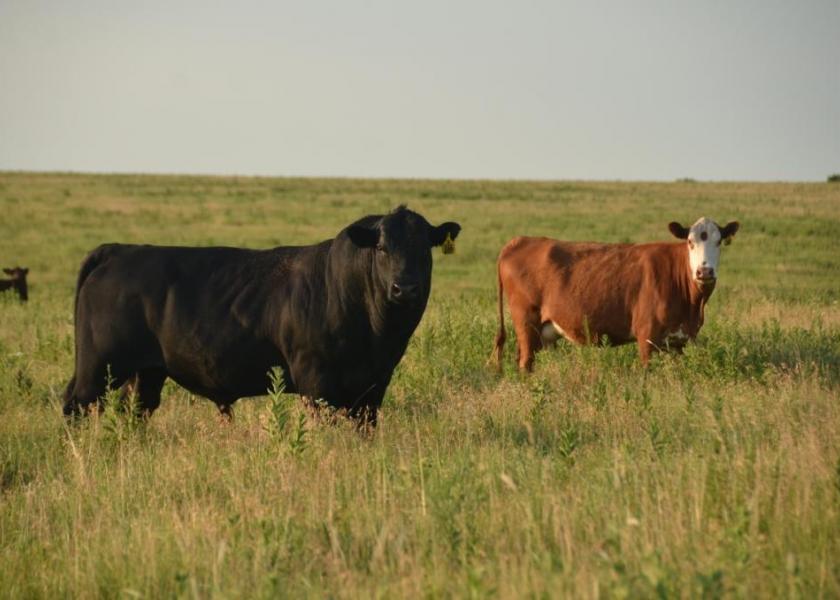Glenn Selk: Spring Breeding Seasons Need to Stay On Time

Spring breeding seasons need to stay on time. Traditionally spring breeding seasons in the Southern Plains begin about the first of May. Many ranches breed the yearling replacement heifers starting in mid-April, allowing the first calf heifers to have an extra 2 weeks to return to heat cycles along with the mature cows the following year. Realizing that this timing of the breeding seasons will force a few calves to arrive in late January and many calves in February, it is necessary that the breeding season is completed before extreme summer heat arrives.
Breeding seasons occurring during extremely hot weather can impact pregnancy rates in several ways.
Heat stress can have an impact by lowering the conception rate at the time of breeding. Florida researchers (Gwasdaukas, et al. 1973) determined rectal and uterine temperatures of dairy cows at insemination. Ranking of factors affecting conception: uterine temperature day of insemination, uterine temperature the day after insemination, mean daily temperature the day after insemination and mean daily temperature the day of insemination. An increase of 0.9 degrees F. in uterine temperature the day of insemination and the day after insemination resulted in decreases in conception rates of 12.8% and 6.9%, respectively.
Not all of the decrease in reproductive performance due to heat stress can be blamed on the female. Several research trials have been conducted throughout the years looking at the effect of high temperatures on bull fertility. As far back as 1963, researchers exposed bulls to temperatures of 104°F and 54% humidity for an eight hour period and then allowed the temperature to drop to 82°F with 72% humidity for the remainder of the 24 hour period. This temperature regimen was continued for seven days and was designed to resemble natural conditions in the subtropics. They found the high temperatures resulted in major detrimental effects on initial sperm motility, sperm concentration, and total numbers of sperm per ejaculate.
Fifteen years later (Meyerhoeffer, et al 1978), Oklahoma scientists placed bulls in controlled environments of 95°F for eight hours and 87° for the remaining 16 hours, while similar bulls were placed in environments of a consistent 73°F. These treatments were applied to the bulls for eight weeks, and then all bulls were exposed to the 73° environment for another eight weeks. During the treatment, the heat stressed bulls had rectal temperatures 0.9°F higher than non-stressed bulls. The percentage of motile sperm cells decreased significantly in the stressed bulls by two weeks of heat stress.
Hot weather and elevated body temperatures can have an impact on embryo survival for at least two weeks after conception. Research conducted several years ago at OSU illustrated the possible impact of heat stress during the second week after breeding of beef cows on their reproductive capability. In this experiment, the cows were bred naturally (after synchronization), then exposed to mild or severe heat stress. The cows were stressed on days 8 through day 16 after breeding. See the table below.

All of the cows were slaughtered on day 17 and the uterine contents were studied for the presence of an embryo. Note that only half of the cows undergoing severe heat stress had an embryo present, and the conceptus (embryo + fluids and membranes) weighed half as much as did those from control cows. One cannot help but speculate that some of the underdeveloped embryos that were present in the stressed cows may not succeed in surviving until the conclusion of gestation. This severe heat stress shortly after breeding certainly had an adverse effect on embryo survivability and therefore pregnancy rates.
In each of these scenarios, heat stress, causing elevated body temperatures resulted in losses in percentage of pregnancy. None of them seemed to cause complete infertility. However, combined, these effects of elevated body temperatures can result in very disappointing breeding percentages. High pressure heat domes often occur in mid to late summer and cause triple-digit heat for several days in a row. The most severe heat stress occurs during the high pressure heat domes in July, August, and early September, when daytime high temperatures are at or above 100 degrees and nighttime lows are near 80 degrees. At this time, cattle spend very few hours in the thermal neutral environment that allows them to dissipate accumulated body heat and core body temperatures continue to be elevated.
In this region of the country, spring breeding seasons should be completed by the end of June if possible.







